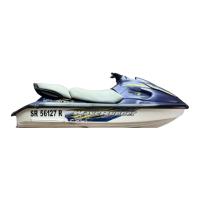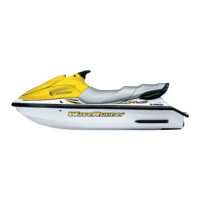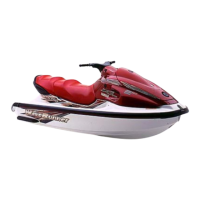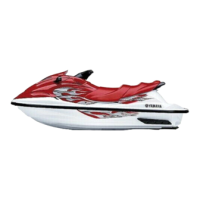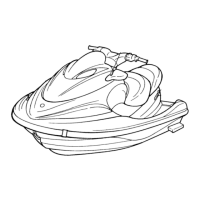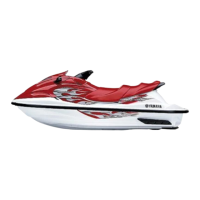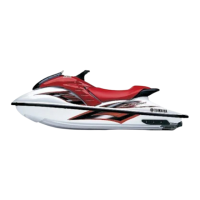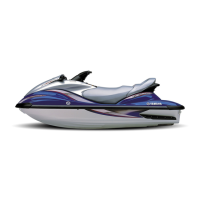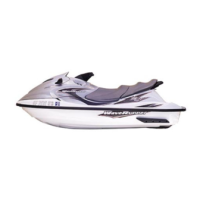Do you have a question about the Yamaha WaveRunner XL700 2004 and is the answer not in the manual?
Details about PRI-ID, HIN, and engine serial numbers for identification.
Information on label locations, types, and prominent warnings for safe operation.
Guidelines for safe operation, including operator age, load limits, and riding conditions.
Essential clothing, PFDs, and practices for safe riding.
Items for onboard use and essential safe boating practices.
Identification and description of key parts of the watercraft.
Instructions for seat removal/installation and storage compartment usage.
How to use the fuel cock knob and throttle lever for engine control.
How handlebars control the jet thrust nozzle for steering.
Explains the engine overheat warning and oil level warning lamps.
Information on recommended fuel and oil types, and their properties.
Essential checks to perform before each use for safety and reliability.
Step-by-step guide for starting and stopping the watercraft's engine safely.
General guidance on learning and safely operating the watercraft, including with passengers.
Procedures for capsized watercraft, turning, stopping, and beaching.
Procedures for storing the watercraft and flushing the cooling system.
Steps for lubricating parts and maintaining the fuel system.
Care and maintenance of the watercraft's battery.
Schedule of recommended maintenance tasks and intervals for owner and dealer.
How to inspect/adjust spark plugs and identify lubrication points.
Guide to identify and resolve common problems with the watercraft based on symptoms.
Actions for common emergencies like clogged intake, dead battery, or towing.
Steps to take if the watercraft becomes submerged or flooded.
Alphabetical listing of topics for quick reference.
| Manufacturer | Yamaha |
|---|---|
| Model | WaveRunner XL700 |
| Year | 2004 |
| Category | Boat |
| Engine Type | 2-cylinder, 2-stroke |
| Displacement | 701 cc |
| Compression Ratio | 7.2:1 |
| Cooling System | Water-cooled |
| Starting System | Electric |
| Lubrication System | Oil injection |
| Seating Capacity | 3 |
| Bore x Stroke | 81 mm x 68 mm |
| Fuel Delivery | Carbureted |
| Storage Capacity | 13.2 gallons |
